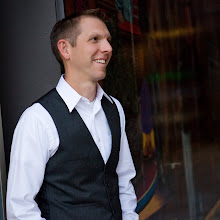shepherds in Luke 2:8-20 :
Merry Christmas!"There is an interesting interplay buried in Micah 5. Not only does Micah mention Bethlehem, he narrows the Messiah's appearance to "Bethlehem Ephrathah." This is significant, and reflects back to Micah 4:8, the reference to Migdal Eder ("tower of the flock").
The Old Testament contains repeated references to something broader than the town of Bethlehem proper. Genesis 35:19 states that Rachel is buried in "Ephrathah (that is Bethlehem)" and that Jacob built a pillar (tower) over her grave. Note the supremacy of the general reference to Ephrathah over the specific town name of Bethlehem. This is expanded in psalm 132, a profoundly Messianic Psalm. Psalm 132 was a "song of ascents." Such Psalms were chanted by travelers ascending from the Shephelah (a region of sandy hills west of Jerusalem) up to the higher land of Jerusalem. These travelers could see the Temple high on Mount Moriah, and chanted the Psalms of ascent as they took the arduous journey uphill. Ephrathah specifically is mentioned as a place where the Psalmist heard mention of the Lord's dwelling place, Jerusalem. In Ruth 4, the blessing given to Ruth is dual: that she may have standing in Ephrathah and fame in Bethlehem.
There has been a lot of discussion of the meaning of "Ephrathah," some of it actually on point. Some have wandered off course by seeing "Ephrathah" as a clan or family, basing the claim on a couple passages in I Chronicles. The pivotal context, however, is Micah. The Micah 5:2 reference builds on Micah 4:8. David Hocking probably is the best known speaker who linked these passages, interestingly enough while preaching on Luke 2:1-14.
Hocking's exegesis of Migdal Eder notes that the broader area known as Ephrathah was pastureland surrounding, but especially immediately north, of Bethlehem. (For a homely analogy, think of the immediate neighborhood of Summitview's building and Rocky Mountain High School as Bethlehem and Rolland Moore Park as Ephrathah.) Ephrathah particularly was the area where shepherds watched over flocks (yes, by night). Many of these were ordinary sheep. But Migdal Eder has a special meaning. It literally refers to the "tower of the flock." Go back to Genesis 35:19, where Jacob erected a "pillar" over Rachel's tomb. Rabbinic tradition states that pillar, as modified over many, many years of rebuilding, was the tower overlooking the Temple flock. The base of the pillar (tower) definitely dates to the time of the Lord's birth, if not much, much earlier. This link describes the Rabbinic tradition and contains a photograph of the current tower of Migdal Eder.
It gets even better. What does the photograph look like? It is a short, stubby tower. Even the base of the existing tower, dating to to at least the time of the Lord's birth, would have risen fifteen or twenty feet above the surrounding fields. Towers were built for lookouts to keep watch. In that location, however, keep watch over what? Answer: sheep. The surrounding land was not just ordinary grazing land. It was where the special sheep were raised for the Temple. For the sacrifices. Here is where the unblemished lamb for Yom Kippur would be selected.
Think now of the Lord's birth. In greater Bethlehem? Check. In the fields with sheep grazing? Check. Where shepherds stood, perhaps on that very tower, "keeping watch" over the flocks? Check. In the very field where the atonement lamb would be selected? Check. Now ponder and reflect on the Lamb of God and exactly who those shepherds were who heard the angelic announcement.
What an amazing Savior! What a Glorious God!"
Additional Resources
Glorious and Lowly: How Jesus Christ is the Hope of the World - Part 1 (focuses on Mary)
Glorious and Lowly: How Jesus Christ is the Hope of the World - Part 3 (contrasts the birth of Jesus and the Rule of Augustus Caesar)









0 comments:
Post a Comment